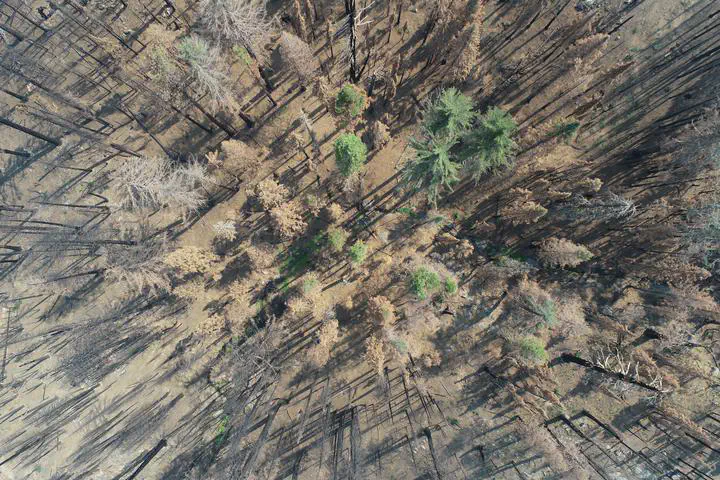Fine-scale fire severity patterns

Wildfires in western U.S. dry forests are increasingly burning large areas at high severity. In large contiguous severely burned patches, near-complete overstory mortality challenges natural forest regeneration processes, which require nearby surviving trees to serve as seed sources. Evaluating burn severity patterns – and thus regeneration potential – across large wildfires generally relies on satellite imagery due to its ready availability and spatially continuous coverage. However, the imagery datasets traditionally used have relatively coarse pixels (e.g., ~ 30 m for Landsat), which can contain multiple trees and may miss small patches of surviving trees (“fire refugia”) that have critical value as seed sources for regeneration. In addition, traditional approaches for evaluating post-fire condition rely on satellite derived burn severity metrics, which quantify the amount of vegetation loss due to fire, but they do not directly quantify the presence or absence of residual live trees, which is likely the more important factor for predicting regeneration potential.
Trees that initially survive the fire – but that sustained injuries – may ultimately die in the following years, with implications for their value as seed sources. The presence of drought before and/or after fire may affect the prevalence of fire refugia and delayed mortality.
We are using higher-resolution imagery data sources (e.g. Sentinel-2) and building new algorithms to understand the prevalence and spectral signatures of small fire refugia and delayed mortality. The work, which focuses on recent large wildfires in the western US, also involves tailored collection of ground-based reference data for calibration and validation of the remote sensing algorithms. In addition to addressing ecological questions related to fire mortality and seed source availability, the work will help refine best-practices in use of Landsat vs. alternative imagery data sources for characterizing fire severity and post-fire conditions.